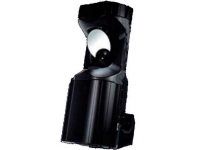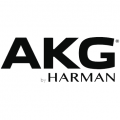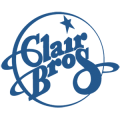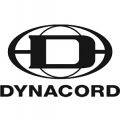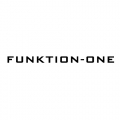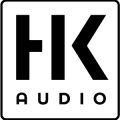ABOUT THE PRODUCT
ABOUT THE MANUFACTURER
GLOSSARY
Si Expression 3
Drawing on more than a decade of experience in the field of digital audio mixing, the Soundcraft Si Expression exploits some of the newest DSP, component technology and manufacturing techniques to deliver our most powerful cost effective digital console ever! Each console in the range is identical in its feature set so your only choice is how many faders and local mic amps you want. With a range covering the super portable 19" rack mount Expression 1 to the mighty Si Expression 3 with its 30+2 faders and 32 mic/line inputs there is a model to meet all needs.
The Si Expression 3 features 32 recallable mic pre amps (16 on Si Expression 1 and 24 on Si Expression 2) plus 4 line inputs, 4 internal stereo FX returns, AES in, and a 64x64 expansion slot offering more than enough scope to use every one of the 66 input processing channels. Every input processing channel has dedicated processing for high pass filter, input delay, gate, compressor and four band EQ whilst keeping it under control is a comprehensive automation system augmented with four mute groups and FaderGlow to light the way so you are never lost.
All Si Expression consoles have busses, output processing and connectivity to match the versatility of the inputs; the 14 aux/group mixes can be configured as 14 mono mixes, 8 mono plus 6 stereo mixes or almost anything in between, whilst the 4 matrix mixes can be mono or stereo as needed. The bus and matrix mixes are complemented with four more mix busses dedicated to the internal Lexicon FX processors all in addition to the left, right and centre busses. Each bus mix features a compressor, 4 band EQ, BSS graphic EQ and delay always available all of the time. Output connectivity is comprehensive with all models featuring 16 balanced line outputs, headphone monitor out, AES out and of course the 64x64 option slot.
To complement the channel and bus processing all Si Expression consoles integrate four stereo Lexicon FX processors based on the MX400 providing a wealth of sounds, user adjustable parameters and dedicated tap-tempo keys. As the FX are hardware based, use of all the effects, even on the most demanding programmes does not affect other processing in any way and all dynamics, EQs, filters, delays, and GEQs remain available regardless what you are doing.
Flexible onboard and expansion I/O options ensure your Si Expression integrates effortlessly with other system components utilising any of the ViSi Connect Si series option cards including MADI USB Combo, BSS Digital Audio Bus (BLU Link), Dante, CAT5 or optical MADI, AVIOM, CobraNet and others. The MADI card, as well as being an interface to multi-track recording systems or plug-in systems like the Soundcraft Realtime Rack, enables users to link the Si Expression to any of the Soundcraft or Studer stageboxes to extend the I/O power and flexibility. Adding a stagebox to an Si Expression actually increases the number of channels you can mix at once not just how many inputs you have available to choose from! It is said `Power is nothing without control` and here the Si Expression excels with a comprehensive but `simple to use` control surface incorporating a dedicated control for every parameter, a row of global mode encoders and colour touch screen ensuring operation is quick and easy.
As you would expect from any Soundcraft digital mixer the facilities are extensive and include legendary audio quality courtesy of the latest generation EMMA DSP processor, the same DSP platform that has helped propel previous Soundcraft Si series consoles to fame. All this power united with reliability, flexibility and usability puts the Si Expression in a class of its own.
Features
- 32 (16 - Si Expression 1, 24 ? Si Expression 2) mono mic inputs
- 4 line inputs
- 66 inputs to mix
- 1 ViSi Connect option card slot for 64 x 64 input/output expansion
- Freely assignable faders and patching
- Pre/Post selection per input per bus
- AES in and out
- Global mode encoders
- Soundcraft FaderGlow
- GEQ on every bus
- 20 sub-group / aux busses
- 4 FX busses
- 8 Matrix busses
- LR and C Mix busses
- 4 Stereo Lexicon Effects engines
- Delay on inputs and outputs
- 4 Mute Groups
- Freely assignable insert loops
- Harman HiQnet integration
- Colour touch screen interface
Si Expression 3 Highlights
- Massive mix capacity - 66 inputs to mix in a small format live sound digital mixer
- 1 ViSi Connect option card slot for 64x64 expandsion of digital I/O including the MultiDigital Card (Firewire/USB/ADAT), BSS Digital Audio Bus (BLU Link), Dante, CAT5 or optical MADI, AVIOM, CobraNet and others.
- Assignable Fader Layers - Customise each of the four fader layer pages to meet your needs or add/insert faders to accommodate that additional mic that was not in the patch list!
- 1 Control = 1 Function - With each control dedicated to a given function there is never any `layering` of controls or navigating through screens; this allows the Si Performer controls to be labeled on the surface just as they would have been on an analogue mixer.
- TOTEM- The One Touch Easy Mix press a single key to mix to an AUX, FX or Matrix bus, the surface and monitoring instantly reconfigure to allow instant mixing to your chosen bus on the faders.
- Soundcraft FaderGlow - Illuminates the fader slots according to function with clearly defined colours for FX, Stereo, Linked Mono, GEQ, POST Fade Aux, PRE Fade Aux you`ll never be lost again!
- BSS GEQ - With a BSS GEQ on every bus there is never any need to assign from a pool of resources and you will never `run out` of processing.
- Security lockout - lock the whole console or just selected elements, manage the security with the users and profile settings.
- Personal Monitoring Interface - When used with the Si BLU link option card, the Si Performer is a perfect partner to the dbx PMC16 Personal Monitoring System , using simple Cat5 cabling for easy setup.
- D.O.G.S. (Direct Out Gain Stabiliser) - Prevents manual change of a mic gain control affecting direct out levels, perfect when 2 consoles share a stagebox or when recording the channel direct outputs.
- Global Mode Controls - A row of rotary controls above each fader assignable at the touch of a button to be GAIN, PAN or HPF for all of the inputs allowing instant access to the core functions.
- Copy & Paste - Copy whole channels, busses, mixes, Lexicon effects, a single part such as the EQ or multiple parts like the channel gate and compressor.
- Instant Access Keys - Dedicated keys on the front panel for STORE, RECALL, NEXT, MUTE 1-4, TAP TEMPO and more negate the need to dive into screen & context menus.
- Function Focus ? Whenever a control is moved or select key pressed the screen displays information about the channel identifying the absolute value of the controls and the channel name, number etc.
- Everything Everywhere - All channels and busses have a full complement of processing, nothing to assign or configure.
Professional used lighting equipment.| Professional second hand lighting equipment.| Professional pre owned lighting equipment.
Professional used audio equipment.| Professional second hand audio equipment.| Professional pre owned audio equipment.
Second hand audio gear. | Second hand lighting.
Pro audio equipment, second hand amplifiers, DJ, second hand sound systems, second hand Microphones, second hand Media Players.
Outdoor & Indoor LED screens for sale, LED mobile truck.
Light trussing, Gebrauchte Veranstaltungstechnik, used stage equipment Stage & Theatre lighting products.
Used Soundcraft
Soundcraft is a British designer and importer (formerly a manufacturer) of mixing consoles and other professional audio equipment. It is a subsidiary of Harman International Industries, which is owned by South Korean company Samsung Electronics.
It was founded by sound engineer Phil Dudderidge and electronics designer Graham Blyth in 1973.
Soundcraft first made its mark by manufacturing the Series 1, the first mixing console built into a flight-case. It was available with 12 or 16 input channels and 4 main stereo outputs, plus a post-fader ‘echo’ send and pre-fader foldback. Each channel had four-band fixed-frequency EQ. The Series 1 also included a multi-pin connector that integrated with a multi-channel microphone snake to route signals from and to the stage from a mix position in the audience.
The Series 1S was introduced in 1975 as an upgraded Series 1. The Series 1S introduced the classic Soundcraft four-band EQ with two sweepable mid-range sections. In addition to The Series 1S added a second foldback send and was available in a 20 channel version.
In 1975, Soundcraft introduced the Series 2 console as a live and recording console. The Series 2 began to build Soundcraft's reputation for quality desks with the classic British sound. The Series 2 launched as a four-bus console, and was later available in an eight-bus version. It was initially offered in 12 and 16 channel versions, and a 24 channel version was later added.
The design used a semi-modular approach with individual channels in separate modules. The master section was made up of echo return, group output, cue master and monitoring modules. The input channels were available in fixed-frequency EQ standard channel and swept EQ versions. The swept EQ version also allowed switching between microphone input and line input, which was typically attached to a multi-track recorder output. All channels provided stereo pan as well as four cue send buses that could be configured as pre- or post-fader and allowed individual monitoring via a pre-fade listen (PFL) function. Each channel could be routed directly to the left–right mix bus or to odd/even pairs of sub-mix buses.
Professional used lighting equipment.| Professional second hand lighting equipment.| Professional pre owned lighting equipment.
Professional used audio equipment.| Professional second hand audio equipment.| Professional pre owned audio equipment.
Second hand audio gear. | Second hand lighting.
Pro audio equipment, second hand amplifiers, DJ, second hand sound systems, second hand Microphones, second hand Media Players.
Outdoor & Indoor LED screens for sale, LED mobile truck.
Light trussing, Gebrauchte Veranstaltungstechnik, used stage equipment Stage & Theatre lighting products.
Active: Powered. An active crossover is electrically powered and divides the line-level signal prior to amplification. An active speaker includes an active crossover and built-in amplifier.
Actuality: Audio from an announcer speaking.
Amplifier: A component that increases the gain or level of an audio signal.
Balanced Input: A connection with three conductors: two identical signal conductors that are 180 degrees out of phase with each other, and one ground. This type of connection is very resistant to line noise.
Bandpass: A two-part filter that cuts both higher and lower frequencies around a center band. A bandpass enclosure cuts high frequencies by acoustic cancellation and low frequencies by natural physical limitations on bass response.
Bandwidth: In audio, the range of frequencies a device operates within. In video, the range of frequencies passed from the input to the output. Bandwidth can also refer to the transmission capacity of an electronic communications device or system the speed of data transfer,is very important when planning a meeting for the attendees to stay connected.
Bass: Low frequencies; those below approximately 200 Hz.
Bi-Wiring: A method of connecting an amplifier or receiver to a speaker in which separate wires are run between the amp and the woofer and the amp and the tweeter.
Boost: To increase, make louder or brighter; opposite of attenuate.
Bridging: Combining two channels of an amplifier to make one channel that more powerful. One channel amplifies the positive portion of an audio signal and the other channel amplifies the negative portion, which are then combined at the output.
CD: Compact Disc. Ubiquitous digital audio format. Uses 16-bit/44.1-kHz sampling rate PCM digital signal to encode roughly 74 or 80 minutes of two- channel, full-range audio onto a 5-inch disc.
CD-R: Recordable Compact Disc.
CD-RW: Rewritable Compact Disc.
Channel: In components and systems, a channel is a separate signal path. A four-channel amplifier has at least four separate inputs and four separate outputs.
Coloration: Any change in the character of sound (such as an overemphasis on certain tones) that reduces naturalness.
Crossover: A component that divides an audio signal into two or more ranges by frequency, sending, for example, low frequencies to one output and high frequencies to another. An active crossover is powered and divides the line-level audio signal prior to amplification. A passive crossover uses no external power supply and may be used either at line level or, more commonly, at speaker level to divide the signal after amplification and send the low frequencies to the woofer and the high frequencies to the tweeter.
Crossover Frequency: The frequency at which an audio signal is divided. 80 Hz is a typical subwoofer crossover point and is the recommended crossover point in theatrical and home THX systems. Frequencies below 80 Hz are sent to the subwoofer signals above 80 Hz are sent to the main speakers.
Cut: To reduce, lower; opposite of boost.
Decibel (dB): A logarithmic measurement unit that describes a sound`s relative loudness, though it can also be used to describe the relative difference between two power levels. A decibel is one tenth of a Bel. In sound, decibels generally measure a scale from 0 (the threshold of hearing) to 120-140 dB (the threshold of pain). A 3dB difference equates to a doubling of power. A 10dB difference is required to double the subjective volume. A 1dB difference over a broad frequency range is noticeable to most people, while a 0.2dB difference can affect the subjective impression of a sound.
Delay: The time difference between a sonic event and its perception at the listening position (sound traveling through space is delayed according to the distance it travels). People perceive spaciousness by the delay between the arrival of direct and reflected sound (larger spaces cause longer delays.
Diaphragm: The part of a dynamic loudspeaker attached to the voice coil that produces sound. It usually has the shape of a cone or dome.
Diffusion: In audio, the scattering of sound waves, reducing the sense of localization. In video, the scattering of light waves, reducing hot spotting, as in a diffusion screen.
Digital Audio Server: Essentially a hard drive, a digital audio server stores compressed audio files (like MP3 or WMA). Most include the processing to make the files, and all have the ability to play them back.
Direct-Stream Digital: A format for encoding high-resolution audio signals. It uses a 1-bit encoder with a sampling rate of 2,822,400 samples per second (verses 44,100 for CD). Used to encode six high-resolution channels on SACD.
Dispersion: The spread of sound over a wide area.
Distortion: Any undesired change in an audio signal between input and the output.
DNR: Dynamic Noise Reduction. A signal-processing circuit that attempts to reduce the level of high-frequency noise. Unlike Dolby NR, DNR doesn’t require preprocessing during recording.
Dolby B: A noise-reduction system that increases the level of high frequencies during recording and decreases them during playback.
Dolby C: An improvement on Dolby B that provides about twice as much noise reduction.
Dolby Digital: An encoding system that digitally compresses up to 5.1 discrete channels of audio (left front, center, right front, left surround, right surround, and LFE) into a single bitstream, which can be recorded onto a DVD, HDTV broadcast, or other form of digital media. When RF-modulated, it was included on some laser discs, which requires an RF-demodulator before the signal can be decoded. Five channels are full-range; the .1 channel is a band-limited LFE track. A Dolby Digital processor (found in most new receivers, preamps, and some DVD players) can decode this signal back into the 5.1 separate channels. Most films since 1992`s Batman Returns have been recorded in a 5.1 digital format, though a number of films before that had 6-channel analog tracks that have been remastered into 5.1.
Dolby EX: An enhancement to Dolby Digital that adds a surround back channel to 5.1 soundtracks. The sixth channel is matrixed from the left and right surround channels. Often referred to as 6.1. Sometimes referred to as 7.1 if the system uses two surround back speakers, even though both speakers reproduce the same signal. Software is backwards-compatible with 5.1 systems, but requires an EX or 6.1 processor to obtain additional benefit.
Dolby Pro Logic: An enhancement of the Dolby Surround decoding process. Pro Logic decoders derive left, center, right, and a mono surround channel from two-channel Dolby Surround encoded material via matrix techniques.
Dolby Pro Logic II: An enhanced version of Pro Logic. Adds improved decoding for two-channel, non-encoded soundtracks and music.
Driver: A speaker without an enclosure; also refers to the active element of a speaker system that creates compressions and rarefactions in the air.
DSP: Digital Signal Processing. Manipulating an audio signal digitally to create various possible effects at the output. Often refers to artificially generated surround effects derived from and applied to two-channel sources.
DTS: Digital Theater Systems. A digital sound recording format, originally developed for theatrical film soundtracks, starting with Jurassic Park. Records 5.1 discrete channels of audio onto a handful of laser discs, CDs, and DVDs. Requires a player with DTS output connected to a DTS processor.
DTS ES: An enhanced version of the 5.1 DTS system. Like Dolby’s Surround EX, a sixth channel is added. In some cases (DTS ES Discrete), the sixth channel is discrete. Software is backwards-compatible with 5.1 systems, but requires an ES or 6.1 processor to obtain additional benefit. Neo: 6 is a subset of DTS ES that creates 6.1 from material with fewer original channels.
Dynamic Range: The difference between the lowest and the highest levels; in audio, it’s often expressed in decibels. In video, it’s listed as the contrast ratio.
Professional used lighting equipment.| Professional second hand lighting equipment.| Professional pre owned lighting equipment.
Professional used audio equipment.| Professional second hand audio equipment.| Professional pre owned audio equipment.
Second hand audio gear. | Second hand lighting.
Pro audio equipment, second hand amplifiers, DJ, second hand sound systems, second hand Microphones, second hand Media Players.
Outdoor & Indoor LED screens for sale, LED mobile truck.
Light trussing, Gebrauchte Veranstaltungstechnik, used stage equipment Stage & Theatre lighting products.


